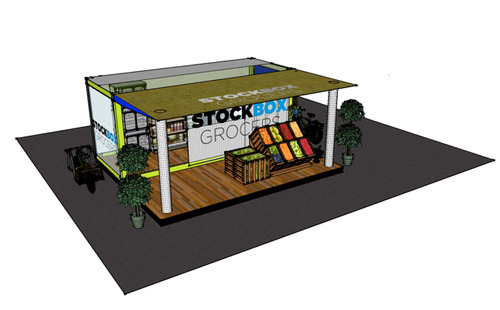What’s New in the World of Emergency Food? Part 2
Stockbox: Saving the Endangered Neighborhood Grocer
Post by Karin Fleisch, an independent food security consultant and Dean’s Scholar at NYU Wagner. She is a Kol Tzedek Fellow at AJWS and serves on the board of Uri L’Tzedek.
———————————————————————
Do you live in the US? Do you live more than one mile from a grocery store? Do you lack access to a vehicle? If you answered 'yes' to all three questions, welcome to the club – you live in a food desert.
It's not a particularly desirable club, unfortunately. Nor an exclusive one: In 2012, over 2.3 million American households lived in food deserts. These Americans suffer from much higher rates of obesity and diabetes, as compared with the general population. In fact, in some food deserts, over 30% of the population is obese. That's right – nearly 1 in 3. It's an astounding rate but perhaps should come as no surprise, instead of grocery stores and sit-down restaurants, food deserts are often home to convenience stores and fast-food outlets.
What to do about this problem? Grocery stores don't want in, since food deserts are often located in rural areas with lower population density (fewer customers) or urban areas with fewer car owners (so customers buy a small quantity of products at a time). Furthermore, since food deserts are nearly always located in low-income areas, grocery stores – fearing crime and low sales – are reluctant to open up shop anyway.
 Based out of Seattle, Stockbox is a small-format grocery store. During the 2012 Hazon Food Conference, Anna Goren, Stockbox's Business Development Assistant, represented the innovative start-up on a panel entitled "Reversing Hunger: Local Responses."
Based out of Seattle, Stockbox is a small-format grocery store. During the 2012 Hazon Food Conference, Anna Goren, Stockbox's Business Development Assistant, represented the innovative start-up on a panel entitled "Reversing Hunger: Local Responses."
Launched in 2011, Stockbox brings good food and dollars into communities that, largely, lack both. With one prototype store in Delridge, an active store in South Park and another on the way in a to-be-revealed downtown Seattle location, Stockbox is growing.
Unlike your typical grocery store, Stockbox dedicates significant resources to community-building, partnering with neighborhood associations and health organizations. And before a new store opens, the company extensively surveys and interviews locals to assess needs. Communication continues after a store launches, ensuring that items in stock reflect both customer preferences and company values of carrying real, wholesome food. Happily, these goals coexist neatly – Anna reports that when customers initially asked for culturally-specific foods (South Park has a large Latino population), the company quickly responded. Because it's small and independent, Stockbox can respond swiftly to customer requests, something large grocery chains can't do. And, when possible, Stockbox sources locally and organically, frequently procuring from Marra Farm, located right in South Park. The physical infrastructure of the store is also environmentally-sound: the abandoned shipping container model, used in the prototype, up-cycles a discarded product (of which Seattle has many!), while the storefront model, used in South Park, obviates the need for new construction, with its attendant waste and destruction.
Keeping prices low remains a challenge – grocery stores operate on a slim profit-margin anyway – but Stockbox ensures that prices are competitive with Safeway, the nearest big-box grocer, and typically offers better deals on fresh produce. Where Stockbox clearly beats the competition is on shopping experience. In lower-income areas, grocery shopping can be demoralizing – stores are often unkempt and impersonal, produce is rotten or flavorless, and staff are clearly unhappy. But because there are no alternatives, shoppers are stuck. Stockbox is dedicated to creating a positive shopping experience. From the community bulletin board that greets entering shoppers to the free cooking classes, the customer is clearly valued. Scaling up such a local, grassroots project will present its own challenges. Even within various neighborhoods in Seattle, Stockbox has had to continually adjust its model; housing the store in a shipping container didn't make sense in South Park, for example. But in a country teeming with food deserts, any oasis – no matter how small – is warmly welcomed.

Got something to say?
You must be logged in to post a comment.